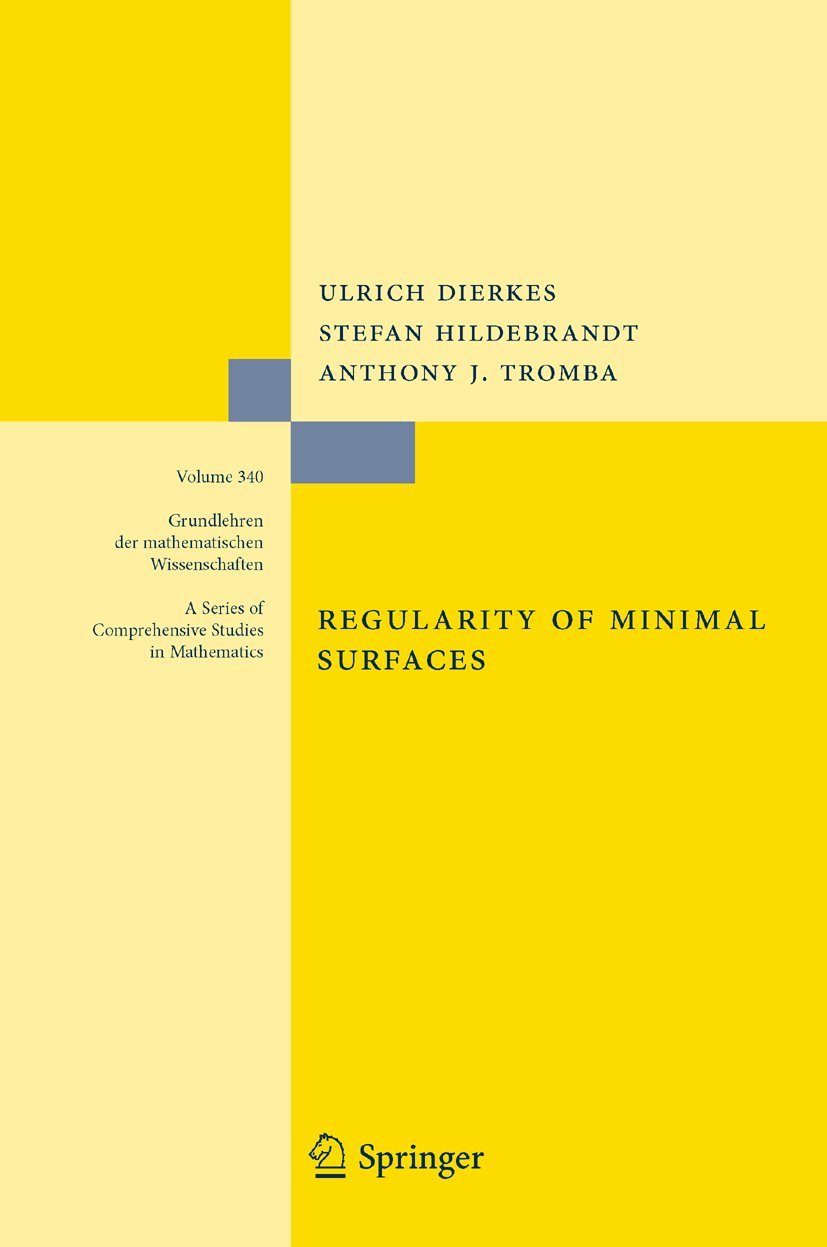Regularity of Minimal Surfaces: 340 (Grundlehren der mathematischen Wissenschaften)
Regularity of Minimal Surfaces: 340 (Grundlehren der mathematischen Wissenschaften) is backordered and will ship as soon as it is back in stock.
Couldn't load pickup availability
Genuine Products Guarantee
Genuine Products Guarantee
We guarantee 100% genuine products, and if proven otherwise, we will compensate you with 10 times the product's cost.
Delivery and Shipping
Delivery and Shipping
Products are generally ready for dispatch within 1 day and typically reach you in 3 to 5 days.
Book Details:
-
Author: Ulrich Dierkes
-
Publisher: Springer
-
Binding: Hardcover
-
Number of Pages: 623
-
Release Date: 30-09-2010
-
EAN: 9783642116995
-
Package Dimensions: 9.4 x 6.5 x 1.1 inches
-
Languages: English
About The Book:
Regularity of Minimal Surfaces begins with a survey of minimal surfaces with free boundaries. Following this, the basic results concerning the boundary behaviour of minimal surfaces and H-surfaces with fixed or free boundaries are studied. In particular, the asymptotic expansions at interior and boundary branch points are derived, leading to general Gauss-Bonnet formulas. Furthermore, gradient estimates and asymptotic expansions for minimal surfaces with only piecewise smooth boundaries are obtained. One of the main features of free boundary value problems for minimal surfaces is that, for principal reasons, it is impossible to derive a priori estimates. Therefore, regularity proofs for non-minimizers have to be based on indirect reasoning using monotonicity formulas. This is followed by a long chapter discussing geometric properties of minimal and H-surfaces such as enclosure theorems and isoperimetric inequalities, leading to the discussion of obstacle problems and of Plateau’s problem for H-surfaces in a Riemannian manifold. A natural generalization of the isoperimetric problem is the so-called thread problem, dealing with minimal surfaces whose boundary consists of a fixed arc of given length. Existence and regularity of solutions are discussed. The final chapter on branch points presents a new approach to the theorem that area-minimizing solutions of Plateau’s problem have no interior branch points.





